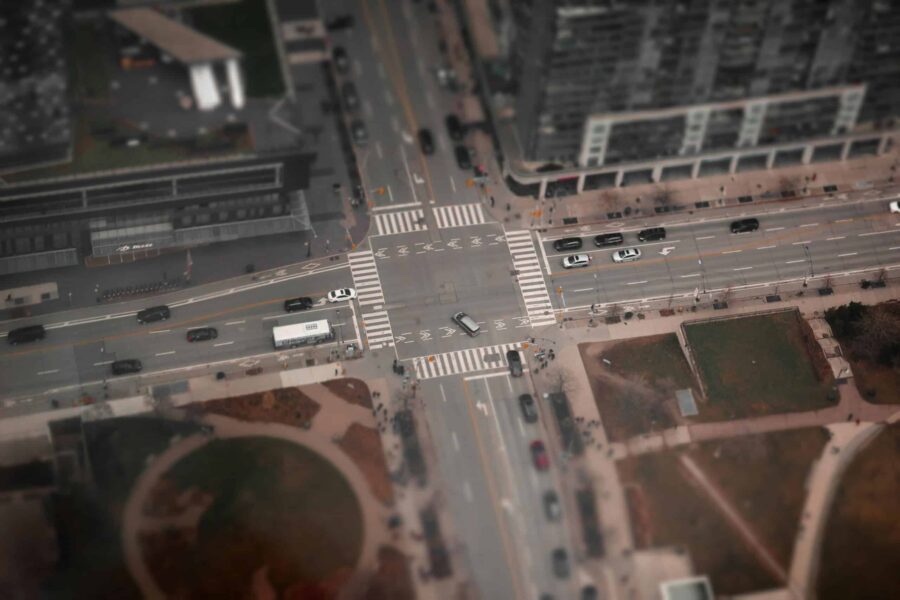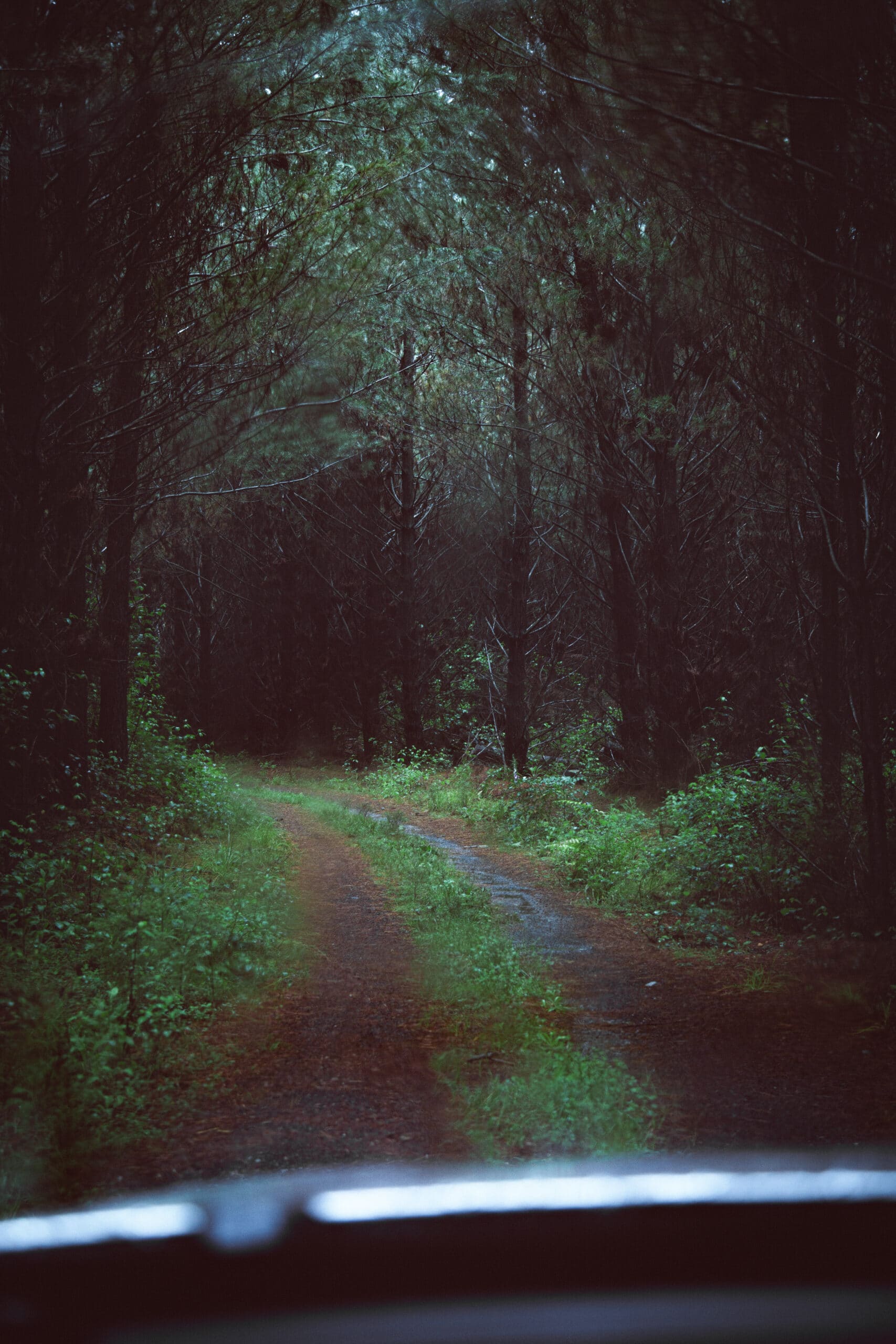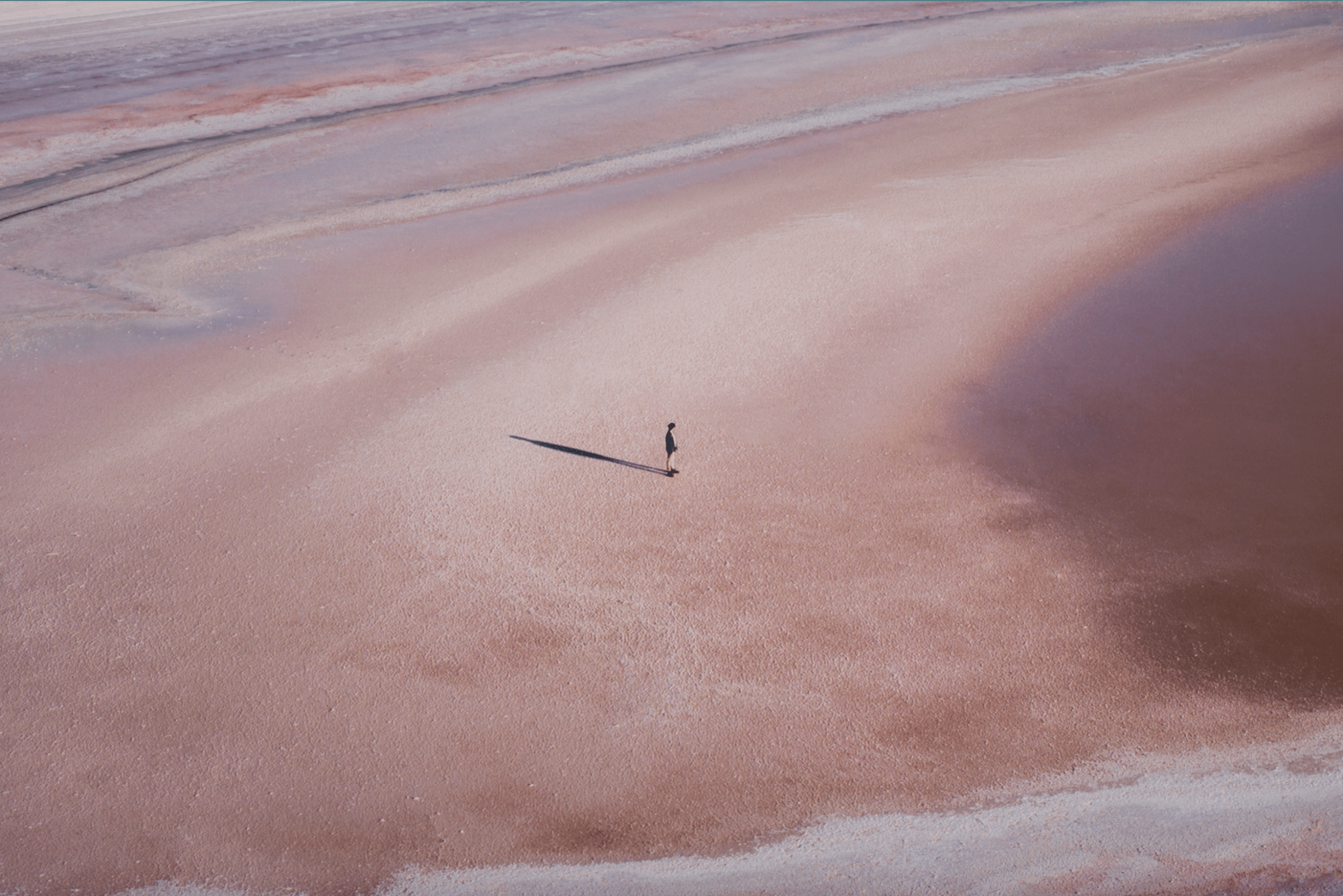Tilt-Shift ist eine Fototechnik, die vor allem mit Miniaturlandschaften in Verbindung gebracht wird. Dabei wird das Objektiv der Kamera manipuliert, um die Schärfeebene und die Tiefenschärfe zu verändern. Dadurch entsteht eine Illusion, die eine riesige Szene in ein scheinbar winziges Modell verwandeln kann.
Die Tilt-Shift-Fotografie gibt es schon seit Jahrzehnten und sie wird von Fotografen auf der ganzen Welt genutzt. Diese Technik erfreut sich immer größerer Beliebtheit - sie zu beherrschen lohnt sich, wenn du deine Karriere vorantreiben und einen neuen Fotostil entdecken willst, den du vielleicht lieben wirst. Wenn du alles über Tilt-Shift-Fotografie lernst, geht es nicht nur darum, eine neue Technik in dein Arsenal aufzunehmen. Es ist auch eine Möglichkeit, deine kreative Vision zu erweitern, eine neue Perspektive zu entdecken und deine Vorstellungen von Komposition, Fokus und Erzählung zu hinterfragen.
Egal, ob du die Tilt-Shift-Fotografie für den künstlerischen Ausdruck, die Architektur- und Immobilienfotografie oder aus einem anderen Grund erkundest, dieser Stil bietet dir viele Möglichkeiten und lädt dich dazu ein, die Welt durch eine andere Linse zu sehen.
In diesem Artikel tauchen wir in den einzigartigen Stil der Tilt-Shift-Fotografie ein und vermitteln dir das Wissen, das du brauchst, um deine fotografischen Fähigkeiten in diesem Bereich zu verbessern.
Ursprünge und Entwicklung der Tilt-Shift-Fotografie
Die Tilt-Shift-Fotografie erzeugt faszinierende Bilder - und ihre Ursprünge sind nicht weniger interessant.
Das Konzept der Tilt-Shift-Fotografie stammt aus den Anfängen des Mediums und bezieht sich auf eine Technik, die in Großformatkameras verwendet wurde. Frühe Kameras hatten Balgengeräte, mit denen die Fotografen den Winkel und die Position des Objektivs im Verhältnis zur Filmebene verändern konnten.
Als sich die Technik weiterentwickelte, wurden Mitte des 20. Jahrhunderts Spezialobjektive eingeführt. Diese Spezialobjektive ermöglichten es den Fotografen, die Linsenebene zu manipulieren, ohne mit sperrigen und komplexen Großformatkameras zu arbeiten.
Im Laufe der Jahre wurden die Tilt-Shift-Objektive immer weiter verfeinert und mit fortschrittlichen Designs und Funktionen ausgestattet. Inzwischen gibt es Objektive, die eine höhere Präzision, eine einfachere Handhabung und ein breiteres Einsatzgebiet ermöglichen, was sie zu wichtigen Werkzeugen für Architektur- und Landschaftsfotografen macht.
Dank der Verfügbarkeit verbesserter Ausrüstung stieß die Tilt-Shift-Technik später bei Fotografen verschiedener Genres auf größeres Interesse. Sie wird vor allem in der Architektur- und Innenraumfotografie eingesetzt, um perspektivische Verzerrungen in Räumen und Gebäuden zu korrigieren und den Miniatur-Effekt in der Landschaftsfotografie zu erzeugen, aber du findest auch Beispiele für Tilt-Shift-Fotografie, die für künstlerische Erkundungen, soziale Medien, virale Trends und vieles mehr eingesetzt wird.

Die Grundlagen der Tilt-Shift-Fotografie verstehen
Die Tilt-Shift-Fotografie basiert auf der Technik der Manipulation von Fokus und Perspektive. Sie ermöglicht es Fotografen, Bilder auf unerwartete Weise aufzunehmen und zu präsentieren. Um die Tilt-Shift-Fotografie zu verstehen, müssen wir uns zunächst mit Tilt, Shift und der für diese Technik benötigten Ausrüstung beschäftigen.
Kippen
Die Neigung bezieht sich darauf, wie ein Objektiv in Bezug auf den Bildsensor der Filmebene in der Kamera geneigt ist. Wenn das Objektiv gekippt wird, ändert sich die Schärfeebene. Normalerweise ist die Ebene parallel zum Sensor, aber durch die Neigung wird sie verändert und ermöglicht einen selektiven Fokus.
Die Neigung wird oft verwendet, um bestimmte Teile einer Szene hervorzuheben oder einen Miniatureffekt zu erzeugen.
Shift
Bei der Verschiebung wird das Objektiv relativ zum Bildsensor in verschiedene Richtungen bewegt, sei es nach oben, unten oder zur Seite. Diese Technik wird in der Architekturfotografie verwendet, um die Perspektive zu steuern.
Die Verschiebung kann es dem Fotografen ermöglichen, ein hohes Gebäude zu fotografieren und dabei die Kamera waagerecht zu halten. Das hilft, das Zusammenlaufen von vertikalen Linien zu verhindern.
Erforderliche Ausrüstung für Tilt-Shift-Fotografie
Die Tilt-Shift-Fotografie erfordert spezielle Objektive, die speziell für diese Technik entwickelt wurden. Diese Objektive ermöglichen es dem Fotografen, die Tilt- und Shift-Bewegungen präzise zu steuern. Einige Fotografen machen das noch auf die alte Art und Weise, indem sie Großformatkameras mit beweglichen Balgengeräten verwenden, um den gewünschten Effekt zu erzielen.
Tilt-Shift-Objektive sind zwar das wichtigste Werkzeug für Tilt-Shift-Fotos, aber auch mit Nachbearbeitungssoftware lässt sich der Effekt erzielen. Nachbearbeitungen können den Effekt zwar imitieren, sind aber weniger präzise und haben nicht die organische Qualität des objektivbasierten Tilt-Shiftings und Shiftens.
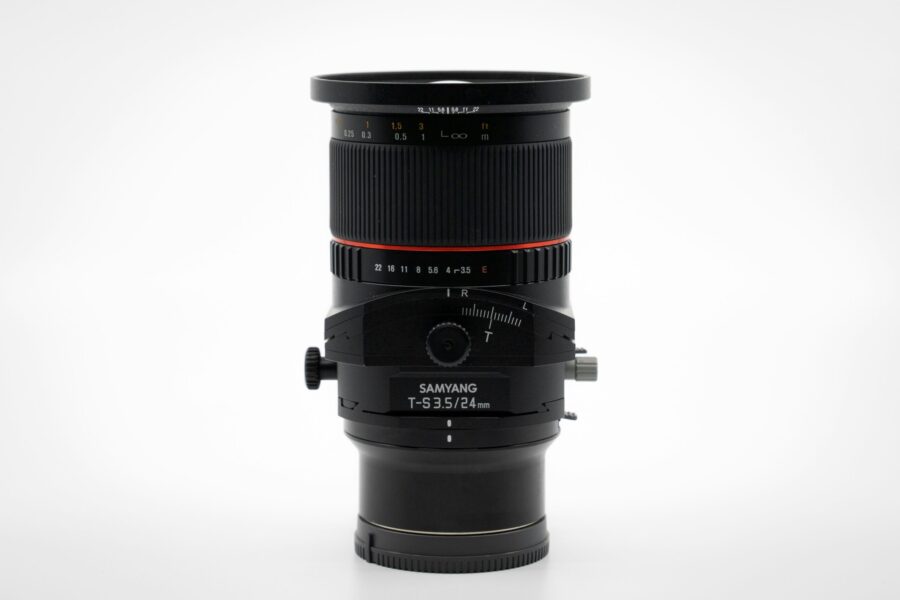
Die 10 besten Techniken, um Tilt-Shift-Fotografie zu meistern
Die Beherrschung der Tilt-Shift-Fotografie ist eine hervorragende Möglichkeit, deine Fähigkeiten zu verbessern und neue kreative Ausdrucksmöglichkeiten zu entdecken. Egal, ob du ein Anfänger oder ein erfahrener Fotograf bist, der den Stil der Tilt-Shift-Fotografie erkunden möchte, hier sind die 10 wichtigsten Techniken, die du beherrschen solltest.
1. Richtige Kamerapositionierung
Als erstes solltest du deine Kamera richtig positionieren. Du solltest eine waagerechte Position einnehmen, um die Perspektive besser kontrollieren zu können und unbeabsichtigte Verzerrungen zu vermeiden. Ein stabiles Stativ kann dir dabei helfen und für Stabilität sorgen. Ein Stativ ist ein wertvolles Hilfsmittel für die Tilt-Shift-Fotografie, mit dem du präzise Einstellungen vornehmen kannst, ohne die Stabilität zu verlieren.
2. Die Auswahl des richtigen Themas
Obwohl jede Art von Szene mit Tilt-Shift-Fotografie-Techniken funktionieren kann, solltest du nach Motiven suchen, die von diesem Fotostil profitieren. Finde Szenen, bei denen die Manipulation der Schärfentiefe oder der Perspektive sinnvoll ist und einen kreativen Touch verleiht.
Mit architektonischen Elementen oder belebten Szenen, die mit einem Miniatureffekt toll aussehen, kannst du nie etwas falsch machen.
3. Die Kippfunktion beherrschen
Die Neigungsfunktion richtet das Objektiv relativ zum Bildsensor in der Kamera aus. Sie verändert die Schärfeebene und ermöglicht es dir, bestimmte Teile des Motivs hervorzuheben. Diese Funktion ist ein entscheidendes Element in der Tilt-Shift-Fotografie und du musst sie beherrschen.
Lerne, die Neigung für den selektiven Fokus zu nutzen, um die Aufmerksamkeit auf bestimmte Teile deines Bildes zu lenken. Du kannst auch mit verschiedenen Neigungswinkeln experimentieren, um zu verstehen, wie sie die Schärfentiefe beeinflussen.
4. Die Verwendung der Shift-Funktion
Der andere Teil der Tilt-Shift-Technik besteht darin, das Objektiv in verschiedene Richtungen relativ zum Bildsensor zu bewegen, um die Perspektive zu steuern. Du kannst die Shift-Funktion nutzen, um die Perspektive in der Architektur zu korrigieren und vertikale Linien gerade zu halten.
Du kannst diese Funktion auch für kreative Kompositionen nutzen, z. B. wenn du bestimmte Aspekte am Rand deines Bildes vermeiden möchtest.
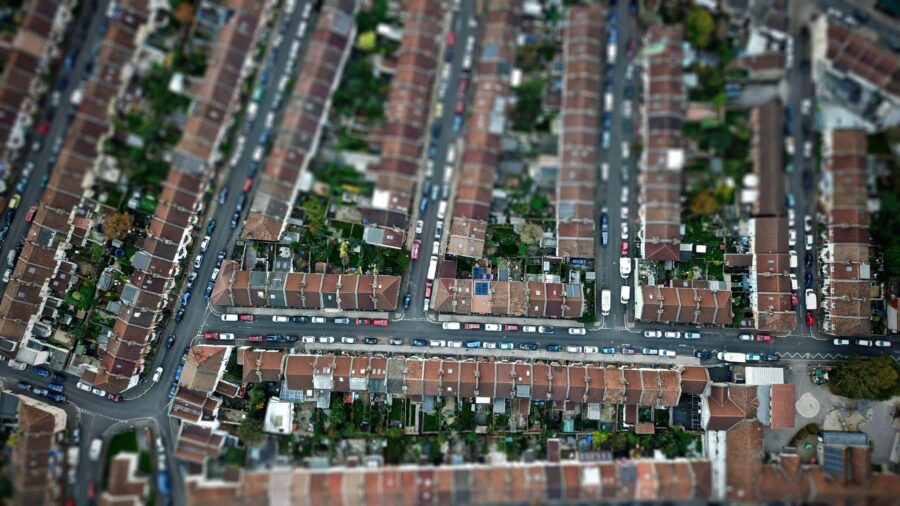
5. Anpassen der Blendeneinstellungen für gewünschte Effekte
Deine Blendeneinstellungen können den gewünschten Neigungseffekt ausmachen oder zunichte machen. Du musst also das richtige Gleichgewicht zwischen Neigung und Blende finden. Eine größere Blende kann zwar den Tilt-Effekt verstärken, du musst sie aber auch im Verhältnis zur Schärfentiefe betrachten.
Kleinere Blenden, d.h. höhere Blendenzahlen, können die Schärfentiefe erhöhen. Dadurch kannst du mehr von der Szene scharf abbilden.
6. Mit der Verschlusszeit experimentieren
Auch die Verschlusszeit kann das Ergebnis deines Tilt-Shift-Fotos beeinflussen. Du kannst mit der Belichtungszeit experimentieren, um den gewünschten Effekt zu erzielen. Lange Belichtungszeiten können deinem Foto ein dynamisches Element verleihen, was besonders bei Landschaften und Stadtansichten von Vorteil ist.
Eine längere Verschlusszeit kann dazu beitragen, Bewegungsunschärfe zu erzeugen und den Miniatureffekt deines Fotos zu verstärken.
7. Einen Miniatur-Effekt erzeugen
Um einen Miniatur-Effekt zu erzielen, wählst du den Neigungswinkel oder die Schärfeebene sorgfältig aus. So kannst du große Motive wie kleine Modelle aussehen lassen. Du kannst auch aus einem höheren Winkel fotografieren, um den Miniatur-Effekt zu verstärken.
8. Verwendung von Tilt-Shift in der Landschaftsfotografie
Die Landschaftsfotografie ist eine der besten Anwendungen für die Tilt-Shift-Fototechnik. Sie kann einer Landschaft Tiefe und Größe verleihen. Mit der Tilt-Technik können sowohl Vorder- als auch Hintergrundelemente scharf abgebildet werden, was eine der größten Herausforderungen für Landschaftsfotografen darstellt.
9. Das Beste aus Tilt-Shift in der Stadtbildfotografie machen
Neben Landschaften kannst du auch Stadtansichten mit Tilt-Shift-Fotografie einfangen. Diese Technik kann einen atemberaubenden Effekt erzeugen, vor allem bei nächtlichen Stadtansichten, wo die Lichter in unscharfen Bereichen ein Bokeh erzeugen können.
Verwende die Verschiebefunktion, um die Perspektive und hohe Gebäude zu korrigieren. Umgekehrt kannst du dich mit der Tilt-Funktion auf städtische Elemente konzentrieren.
10. Perfektionierung des Fokus mit Tilt-Shift
Die Tilt-Shift-Technik erfordert eine manuelle Fokussierung, um Präzision zu erreichen. Nutze die Live-View-Funktionen deiner Kamera und das Fokus-Peaking, um genau zu fokussieren.
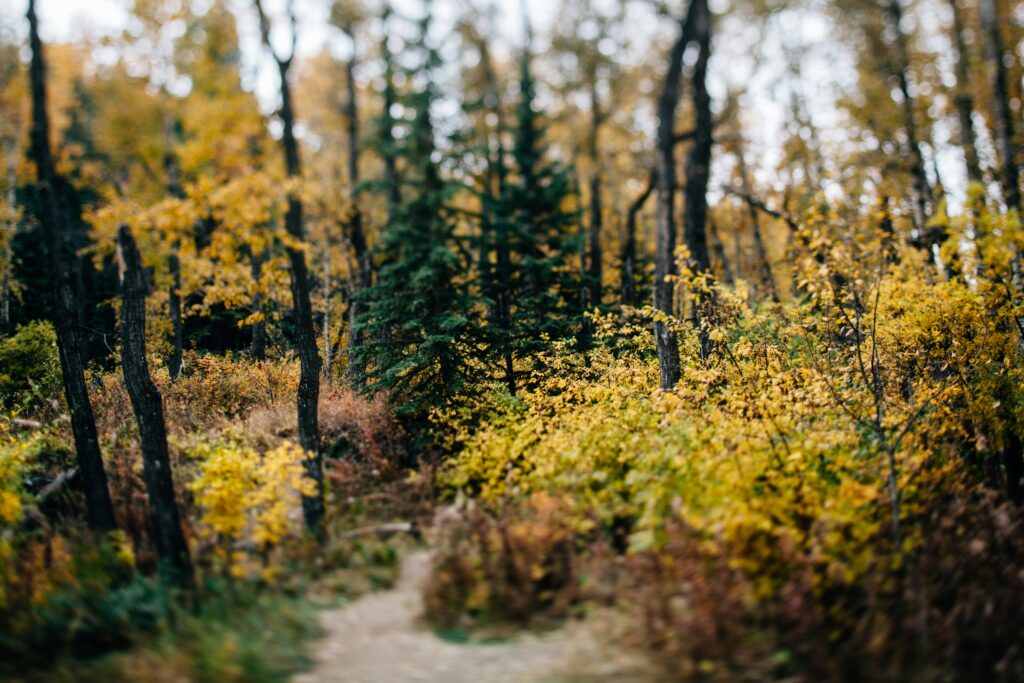
Tipps und Tricks für fortgeschrittene Tilt-Shift-Fotografie
Wenn du die Grundlagen der Tilt-Shift-Fotografie beherrschst und bereit bist, fortgeschrittenere Techniken zu erforschen, findest du hier einige Tipps und Tricks, die dir helfen können, diesen Fotostil wie ein Profi zu beherrschen.
Kippen und Verschieben kombinieren
Die Tilt-Shift-Technik erfordert die gleichzeitige Verwendung von Tilt und Shift. Wenn du den Dreh erst einmal raus hast, kannst du komplexere und sehr kontrollierte Kompositionen erzielen. Aber vorher musst du erst einmal verstehen, wie sich die Tilt- und Shift-Bewegungen auf das Bild auswirken können.
Neigen für Panorama-Aufnahmen verwenden
Tilt-Shift-Objektive eignen sich hervorragend für die Aufnahme von Panoramabildern und werden daher häufig in der Architekturfotografie eingesetzt. Du kannst weite Panoramen mit gleichbleibender Perspektive erstellen, indem du das Objektiv von links nach rechts oder von rechts nach links schwenkst, ohne die Kamera zu bewegen.
Fokus Stacking mit Neigung
Um bei Landschaftsaufnahmen Schärfe von vorne nach hinten zu erreichen, kannst du eine Kombination aus Tilt für selektiven Fokus und Focus Stacking bei der Nachbearbeitung verwenden.
Fortgeschrittene Miniatur-Effekt-Techniken
Um den perfekten Miniatureffekt zu erzielen, solltest du dich nicht scheuen, mit verschiedenen Höhen und Blickwinkeln zu experimentieren. Die wirkungsvollsten Miniaturszenen werden aus den unerwartetsten Blickwinkeln aufgenommen.
Kreatives Bokeh
Erzeuge einzigartige Bokeh-Effekte in unscharfen Bereichen deines Fotos, indem du mit den Blendeneinstellungen deiner Kamera spielst. Das ist besonders wirkungsvoll bei Nachtaufnahmen oder bei Stadtansichten.
Selektive Färbung
Bei der Nachbearbeitung deiner Fotos kannst du Farben in fokussierten Bereichen selektiv verstärken oder dämpfen, um die Aufmerksamkeit auf bestimmte Elemente zu lenken und dem Tilt-Shift-Effekt weitere Ebenen hinzuzufügen.
Hyperfokale Entfernung Verstehen
Um die Schärfe und Schärfentiefe deines Fotos zu maximieren, ist es wichtig, dass du die hyperfokale Entfernung kennst. Das ist die kürzeste Entfernung, in der ein Objektiv fokussiert werden kann, ohne dass die Objekte unscharf werden.
Experimentieren mit verschiedenen Objektiven
Die Brennweite kann den Tilt-Shift-Effekt beeinflussen. Weitwinkel-Tilt-Shift-Objektive bieten zum Beispiel eine andere Perspektive als Standard- oder Teleobjektive. Du solltest mit verschiedenen Tilt-Shift-Objektiven experimentieren, um den gewünschten Effekt zu erzielen.
Verwenden von Filtern
ND-Filter können helfen, lange Belichtungszeiten zu erreichen und Bewegung hinzuzufügen. Das kann besonders bei Tageslicht hilfreich sein und den surrealen Effekt deines Tilt-Shift-Fotos verstärken.
Kippen für Abstracts
Du kannst die Tilt-Shift-Technik auch verwenden, um abstrakte Bilder zu erstellen und unerwartete Kompositionen zu schaffen.
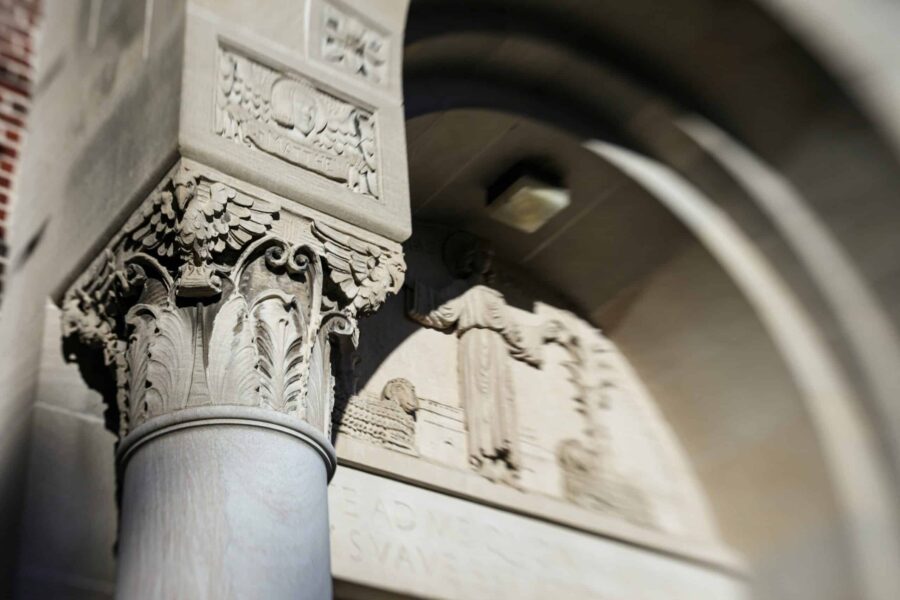
Kombinieren von Tilt-Shift mit anderen Techniken
Du kannst die Tilt-Shift-Fotografie auch mit anderen Techniken kombinieren, um noch innovativere und fesselndere Fotos zu machen. Hab keine Angst, die Grenzen deiner Kreativität zu überschreiten. Hier sind einige Möglichkeiten, wie du Tilt-Shift mit anderen Fototechniken kombinieren kannst.
- Fotografie mit Langzeitbelichtung: Verwende Tilt-Shift mit langen Belichtungszeiten, um bewegte Elemente einzufangen und dem Foto ein Gefühl von Bewegung zu verleihen.
- HDR-Fotografie: Verwende Tilt-Shift mit HDR, um eine größere Bandbreite an Details und Licht einzufangen.
- Panorama-Nähte: Verschiebe das Objektiv horizontal oder vertikal und mache mehrere Aufnahmen, um hochauflösende Panoramabilder zu erstellen.
- Fokus Stacking: Kombiniere Tilt-Shift und Focus Stacking, um Schärfe zu gewährleisten.
- Schwarz-Weiß-Fotografie: Verwende den selektiven Tilt-Shift-Fokus für Schwarz-Weiß-Fotos, um Kontraste, Texturen und Formen zu betonen.
- Zeitrafferfotografie: Verwende die Tilt-Shift-Funktion, um Zeitraffervideos zu erstellen und reale Motive wie Miniaturmodelle in Bewegung aussehen zu lassen.
- Nachtfotografie: Verwende die Tilt-Shift-Funktion für Nachtaufnahmen, um eine einzigartige Perspektive auf die Stadt einzufangen.
- Makrofotografie: Verwende die Tilt-Shift-Funktion für Makroaufnahmen, um die Schärfeebene präzise zu steuern.
- Porträtieren: Nutze die Neigung, um das Motiv zu fokussieren und Hintergründe unscharf zu machen.
Ideen für einzigartige Tilt-Shift-Fotoprojekte
Wenn du auf der Suche nach Ideen bist, um das Potenzial der Tilt-Shift-Fotografie zu erkunden, findest du hier einige Anregungen:
- Nimm eine Reihe verschiedener Städte auf der ganzen Welt mit Tilt-Shift auf
- Landschaften oder Stadtansichten zu verschiedenen Jahreszeiten dokumentieren
- Erstelle ein Zeitrafferprojekt mit Tilt-Shift-Effekten
- Erfasse die architektonischen Details von Gebäuden und Strukturen
- Belebte Straßenmärkte mit einem Tilt-Shift-Objektiv fotografieren
- Erobere verlassene Gebäude und Städte
Die Tilt-Shift-Fotografie ist eine faszinierende Technik, die dich auf eine Reise der kreativen Entdeckungen mitnehmen wird. In diesem Leitfaden stellen wir dir die besten Methoden vor, mit denen du diesen einzigartigen Stil meistern kannst - von den Grundlagen der Kamerapositionierung bis zum Verständnis der Tilt- und Shift-Funktionen.
Wenn du dich auf deine Reise durch die Tilt-Shift-Fotografie begibst, denke daran, dass jede Szene, die du einfängst, eine Gelegenheit ist, die Welt aus einer anderen Perspektive zu sehen, eine Geschichte zu erzählen und deinen kreativen Ausdruck zu entdecken.
